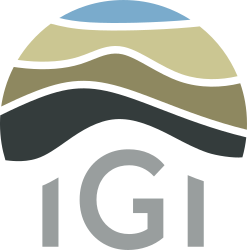Using pages
Overview
Pages within IGI software provide a comprehensive and flexible way to view, organise, validate, interact and edit project data. Here, we explore how to edit a page and interact with the data on a page.
Version: 1.14+ (Nov 2018)
Usage: Within an open page
How to use in practice
There are a range of actions that can be performed on pages.
Edit Page (Ctrl+Shift+E, right click on page column headers)
Pages are flexible and can be configured to the users preference with regards to the presence, order and display precision of properties. The pages are just views onto the database; properties can appear in any order and on as many pages as the user wishes.
To edit a page right click on either the page icon in the artefact manager or on an open page and select Edit page.... Properties can be added or removed within the Edit page dialogue. It is here also where property display Precision is set (in terms of the number of decimal places show; maximum allowed 6). From version 1.28 it is possible to set the display precision for all properties at the top of the selected properties list.
New Page
![]() Not every property in the IGI property model is present on one of the analysis or interpretation view pages provided when you start the application. As the property model evolves additional pages will be added. The user can create new pages using either the Toolbar shortcut icon or from the menu: Page --> New page...
Not every property in the IGI property model is present on one of the analysis or interpretation view pages provided when you start the application. As the property model evolves additional pages will be added. The user can create new pages using either the Toolbar shortcut icon or from the menu: Page --> New page...
When any new page is created by default it is placed below the Interpretation view folder in the Artefact Manager page tree structure. You can move this new page to any pre-existing page folder, or create a new folder for it to be housed in (New folders in the page structure are created by right clicking on the blue page folder into which you wish the new folder to sit and cannot be moved subsequently).

When creating a new page there is a special "All properties with data" page. This page is created dynamically when this 'auto-page' is selected. In large databases with a lot of samples and property values it can take a while for the system to find all properties which have data - please be patient here and wait for the results to complete. As shown above, once complete the user is informed of the number of properties found, and a page name is auto-created with the current date and time.
Once created these pages are fixed in terms of the properties shown, so if new properties are brought into the system you will need to create a new page showing all properties with data. Be aware that in large projects very wide pages (with very many properties) can take a longish time to open, as the system works out the valid value counts for all the properties on the page, although from version 2.0 onwards this is a lot faster.
It is possible to bulk update properties on a page. This allows a user to change the analysis groups, indicators and units in bulk on a page, and can be very useful when looking at pages of molecular or gas data, where the ability to change indicators in bulk is frequently required.
It is possible to add additional samples and delete existing samples in a p:IGI+ or Metis Transform project, using the page views.
From version 1.15.0 onward the row and column(s) of the selected cell(s) are highlighted in the row and column headers. The styling for this being changed in version 2.0 to make it possible to retain all information about selected cells, for example out of range highlighting, and the presence of derived values.
Create Samples (Ctrl+Shift+C)
Right click on any open page and select Create Samples, select the number of samples to create and hit OK. Created samples are appended to the bottom of the page (because they are added to the end of the set of existing database samples).
Delete Samples (Shift+Del)
The deletion of samples from a project is achieved through a similar workflow. Highlight the samples destined for deletion (Shift+select will block select samples while Ctrl+select will enable multi-select). Right click on the page and select Delete selected samples or using the Shift+Del keyboard shortcut (Del alone simple clears the selected cell content, but leaves the samples in place).
The action of sample creation, deletion and value deletion can all be undone using Ctrl+Z / Undo, and redone with Ctrl+Y / Redo.
Brushing samples from a page (Ctrl+B, Ctrl+Shift+B)
From version 2.0 it is possible brush samples from the page (right click option or Ctrl+B), adding these to the brushed set (which can be selected from graphs and maps too). Brushed samples are highlighted with the salmon row header. If visual query is open the currently selected sample in visual query is highlighted with a salmon border, and will scroll into view as the user navigates through the selected samples in visual query. Out of range highlighting, select, value origin etc are still shown alongside the brushed samples. Samples can be 'un-brushed' from the page using the right click menu, or Ctrl+Shift+B.
Brushing is a two way action and live, so samples selected on pages will highlight on graphs and maps and vice-versa.
© 2026 Integrated Geochemical Interpretation Ltd. All rights reserved.
